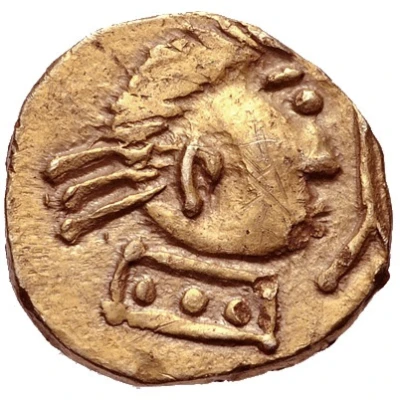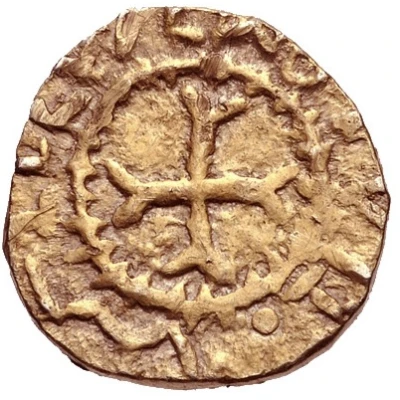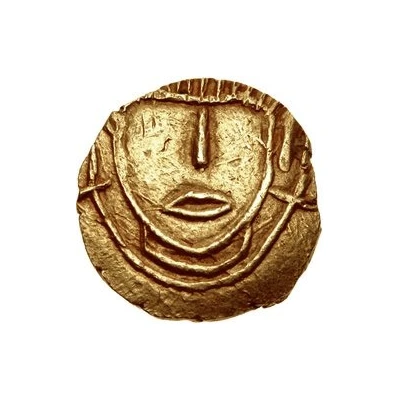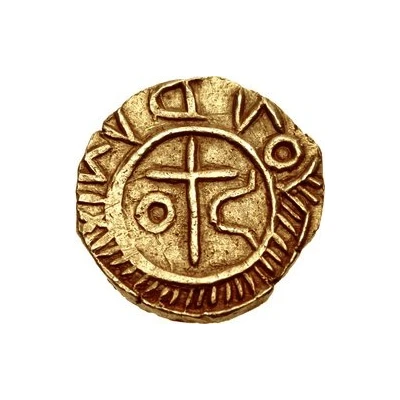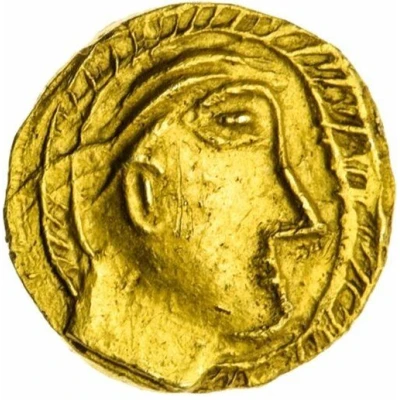
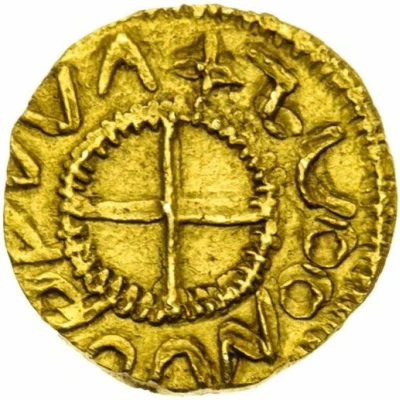

© Spink and Son
Thrymsa 'London-derived' type
| Gold | 1.26 g | - |
| Issuer | Early Anglo-Saxon (Kingdoms of British Isles and Frisia) |
|---|---|
| Type | Standard circulation coin |
| Years | 620-645 |
| Value | 1 Thrymsa |
| Currency | Thrymsa (600-675) |
| Composition | Gold |
| Weight | 1.26 g |
| Shape | Round (irregular) |
| Technique | Hammered |
| Orientation | Variable alignment ↺ |
| Demonetized | Yes |
| Updated | 2024-10-09 |
| Numista | N#306835 |
|---|---|
| Rarity index | 97% |
Reverse
Blundered legends, cross in beaded circle.
Script: Latin
Lettering: +ZUOONUUPLUV^
Comment
Early Anglo-Saxon period (c.600-c.775), Thrymsa coinage (c.600-c.675), Crondall types (c.620-c.645).A group of twelve different types, which are almost certainly English, were found in the Crondall hoard of 1828.
Gold purity is estimated at between 40% and 70%.
Sutherland has discussed the derivation of this type from the forward-facing portrait type with a clear reverse inscription of LONDVNIV. The influence of this type on the subsequent 'London-derived' group 'is to be seen most clearly in their conspicuously linear technique, in the adoption of a cross-hatching border for the obverse in the use of a plain cross as the central reverse type, and in the employment of a reverse legend which, enclosing the cross, strongly suggests by its blundered lettering that some form of the name 'Londinium' or 'Lundonia' served as a basis for imitation.' (ASGC, no. 43)
Academic debate as to further attribution and dating has raged for more than a century. In 1915, Baldwin Brown opined: 'if struck in London with [its] ecclesiastical significance, the piece might conceivably be the work of Mellitus during his tenure of the See [604-c.617], and the head [depicts] that of an Archbishop'. More recently Anna Gannon has regarded this attribution as anachronistic as she reopened the discussion at the Cambridge Symposium (March 2015). It was suggested that this Shilling, if of Bishop Mellitus (d. 624), could be twinned with those shillings of York, possibly by Edwin (d. 633) or Paulinus. In the context of the celebrated issue of Eadbald of Kent (616-640) imply a date earlier than c. 630 for the reintroduction of this native coinage to England, and possibly as far back as the Kentish kingdoms conversion to Christianity in AD 619.
(courtesy www.spink.com)
Interesting fact
One interesting fact about the Thrymsa coin is that it features a unique blend of Christian and pagan elements in its design. The obverse (front) side of the coin depicts a cross, which symbolizes the Christian faith, while the reverse (back) side features a image of a bird, which is believed to represent the pagan god Woden. This blending of religious symbols reflects the cultural and religious shifts that were taking place in Early Anglo-Saxon society during the 7th century.
